Six years ago I wrote my first ever Dyck Arboretum blog post about our “Teenage Prairie” Prairie Window Project (PWP) reconstructed prairie. The birth and development of this project was the focus of my early years here at the Arboretum from 2004 to 2010 and at times it indeed felt like developing progeny. Sticking with that maturing prairie/human metaphor, I’d say this prairie today would be in the young adult stage. While it is still maturing, it relies much less on the parental influence of Arboretum staff and its changes from year to year are more subtle.
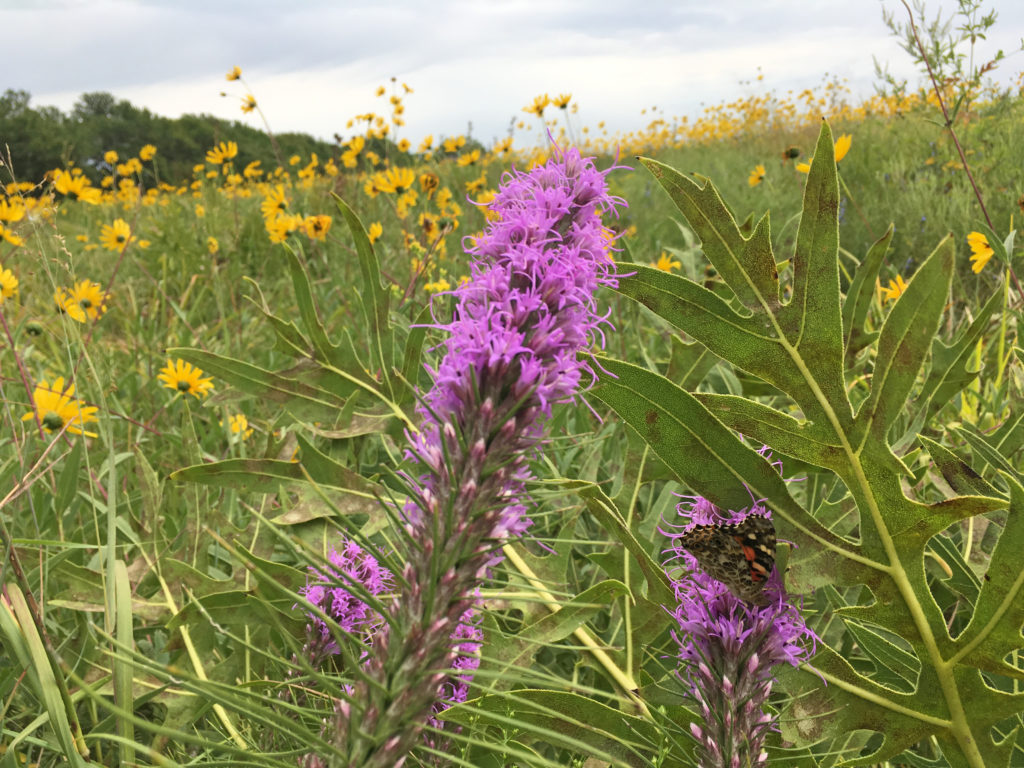
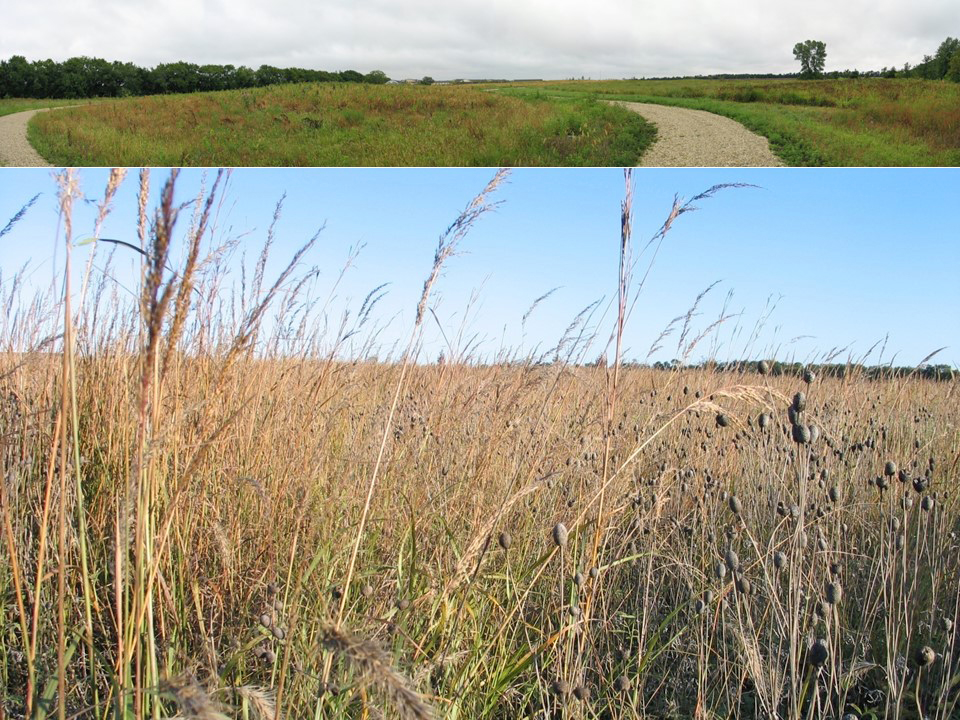
I recently gave a 40-minute webinar presentation about the story of developing this PWP prairie. I enjoyed remembering all the educational and community building opportunities this project intensively afforded over a 7-year period and how it still serves us today. From that presentation, I will summarize through images and interpretation the stages this reconstructed prairie has been through.
Conceptual Stage
This reconstructed prairie was a gleam in the eye of Harold and Evie when they started the Dyck Arboretum in 1981. With native gardens already established here, they also wanted visitors to experience the feeling of visiting a larger prairie ecosystem. I was tasked with oversight of this project when I started working here in 2004. Preparations began in 2005 to turn 18 acres of agricultural ground south of our hedge row to a prairie.
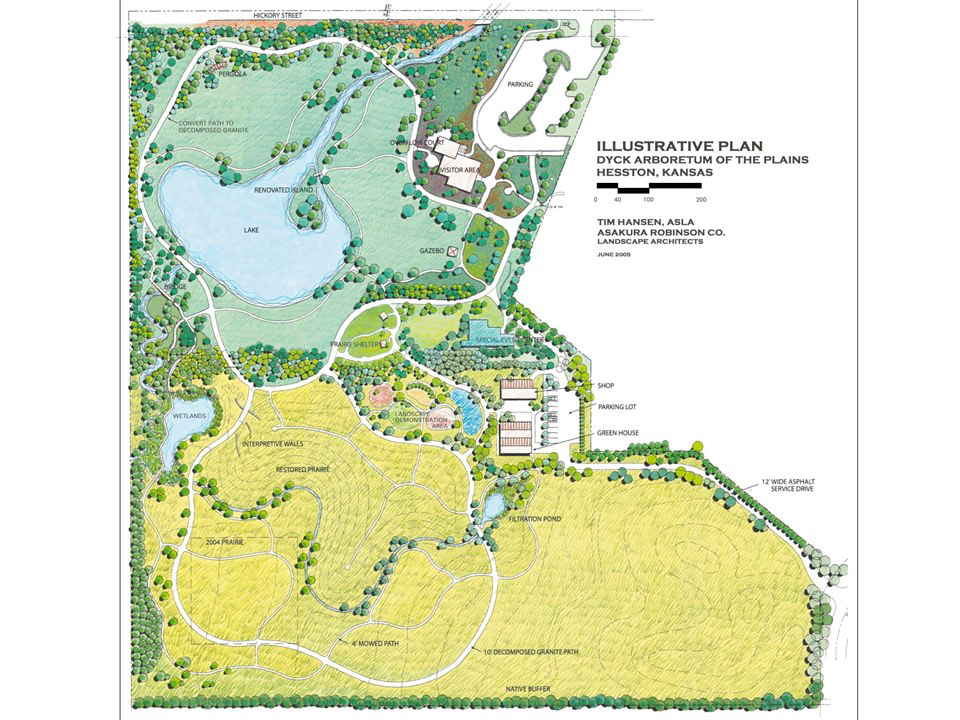

Collecting Seed
We wanted this prairie reconstruction to be developed with local ecotype seed collected with in a 60-mile radius, knowing that the plants would be best suited to local fauna, soils, and climate. No other prairie in Kansas had been restored with local seed, and we knew this site could be a unique future seed source for creation of other prairies. We set out to visit more than 100 nearby blueprint prairies to collect data on their plant composition, study the butterfly and bird populations they supported, and scope out where we would best be able to hand-collect seed. Visits to these prairies on a regular basis helped us secure the grass, wildflower, shrub and sedge seed needed to plant a diverse prairie at Dyck Arboretum.
The following Kansas physiographic map shows the 60-mile radius circle range in which we collected. Given the Dyck Arboretum location in the Wellington McPherson Lowland region, we visited the few remaining degraded remnants we could find in this region regularly for seed. However, we equally spent time collecting in more diverse prairies located just east in the Flint Hills and just north in the Smoky Hills as well.
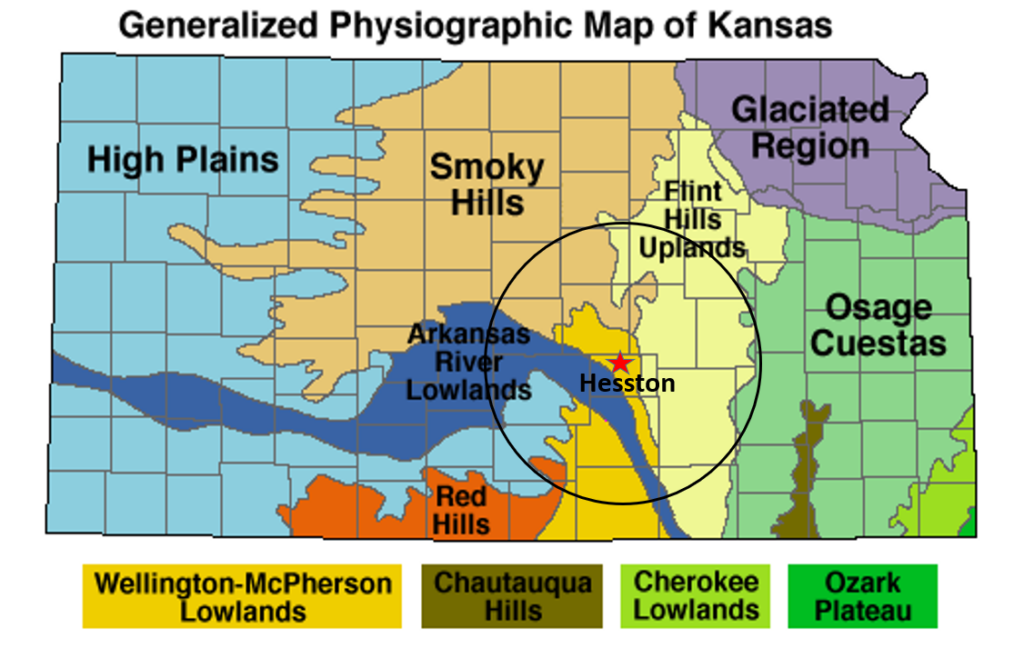

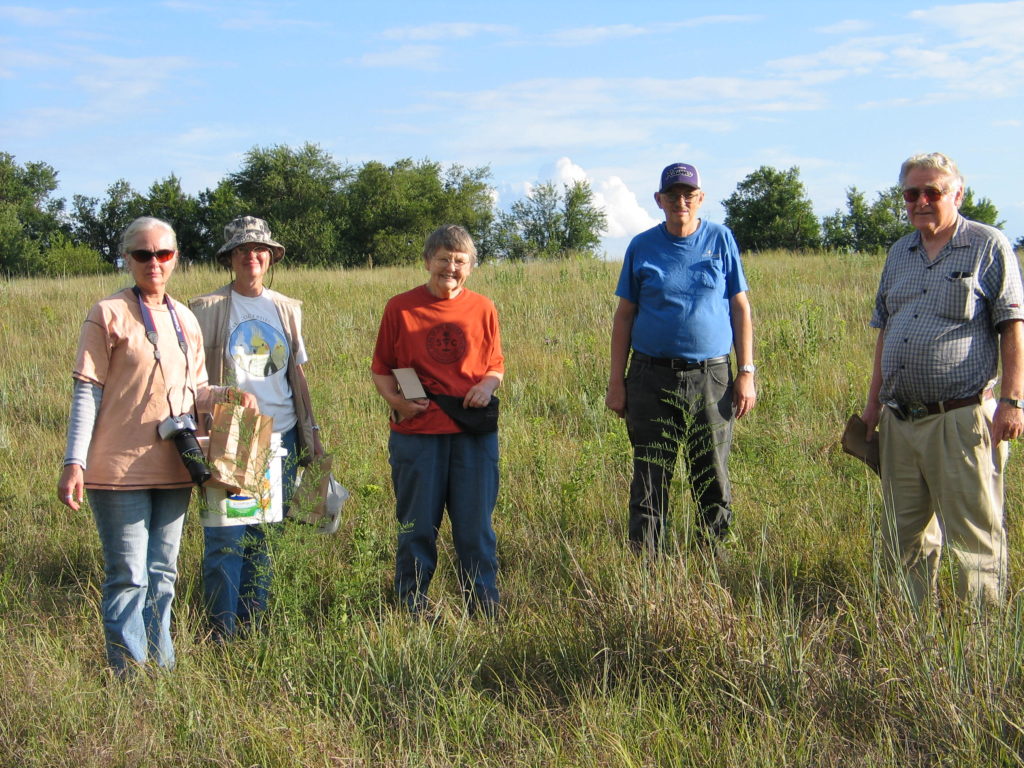

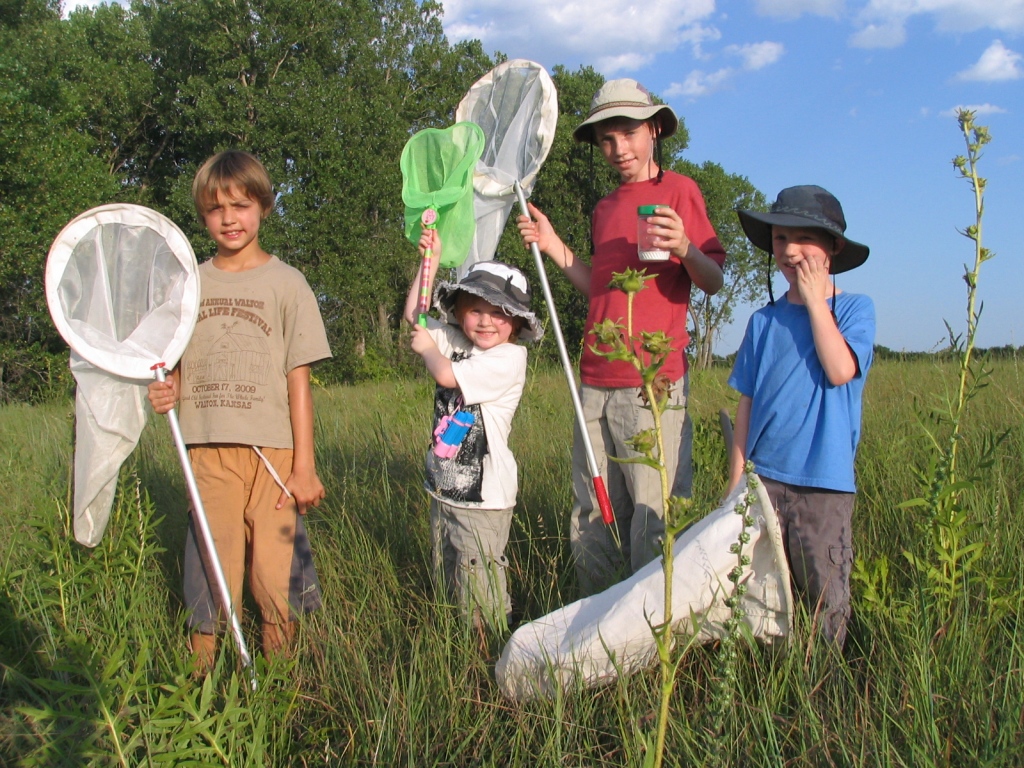
Seed Mix
To best mimic the species composition of the blueprint remnant prairies we were observing, prairie restoration literature suggested that we should be aiming for a wildflower:grass ratio of no less than 50:50 and perhaps even has high as 80:20. Other target planting parameters included at least 50 lbs of seed per acre, a minimum of 50 seeds per square foot, and as much species diversity as possible. Five different plantings between 2005 and 2010 met these parameters and more than 120 local ecotype prairie species were planted into the PWP during that time.



Planting Seed
Planting our seed mix with a seed drill or mechanical planter wasn’t realistic given the unique shape of our planting areas and diverse shapes/weight/textures of the seed mix. An alternative plan was to establish a planting grid that would allow for even distribution of seed using 5-gallon buckets. We assigned two buckets and a volunteer per planting unit, distributed seed (sand added for bulk) evenly to all buckets, and instructed volunteers to evenly cover their flag-marked planting unit.


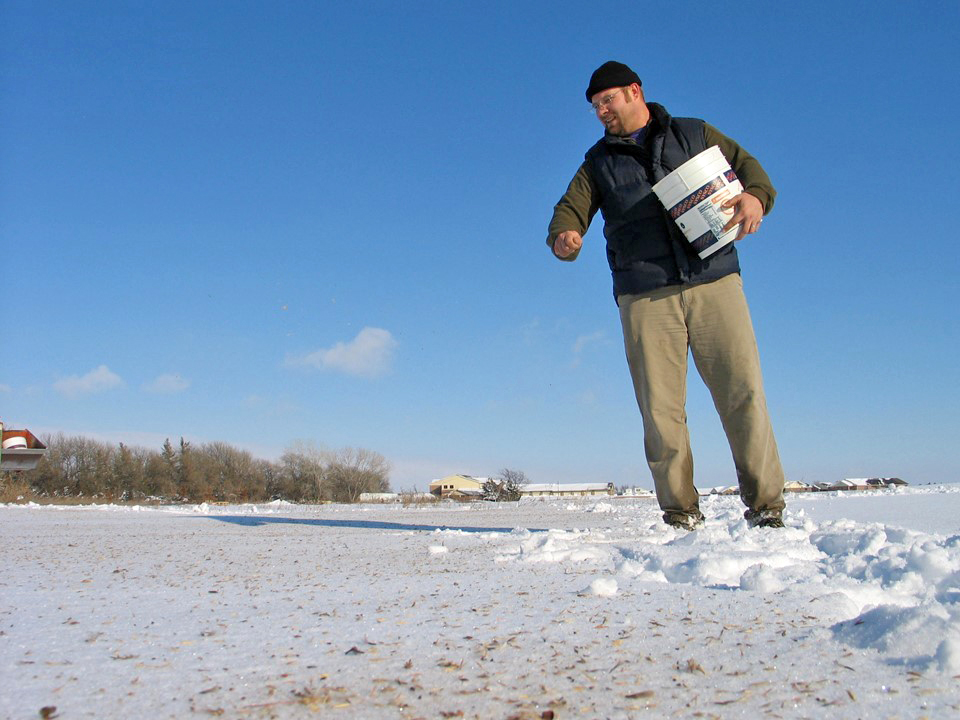
Prairie Management
Prairies require regular disturbance management of grazing and fire to maintain healthy ecosystems and prevent the invasion of woody plants and non-native cool-season grasses. Selective pulling of certain invasive, non-native species was key early in the PWP planting’s development. Once the desired prairie vegetation built sufficient roots after about three years and became well-established, a rotation of mowing (to best simulate grazing), burning and leaving residual has been implemented ever since.

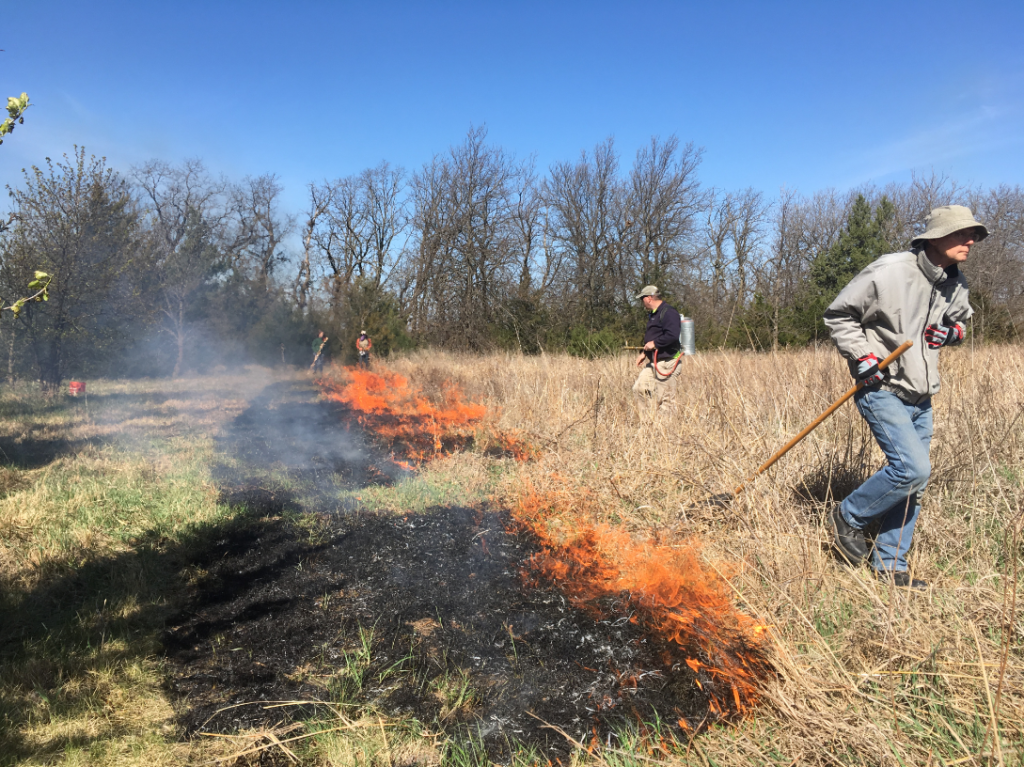
Research
More than a dozen undergraduate and graduate students have been invaluable in collecting data to monitor populations of plant and wildlife species. Their efforts have helped us understand changes in groupings and species as the planting matures and management continues.
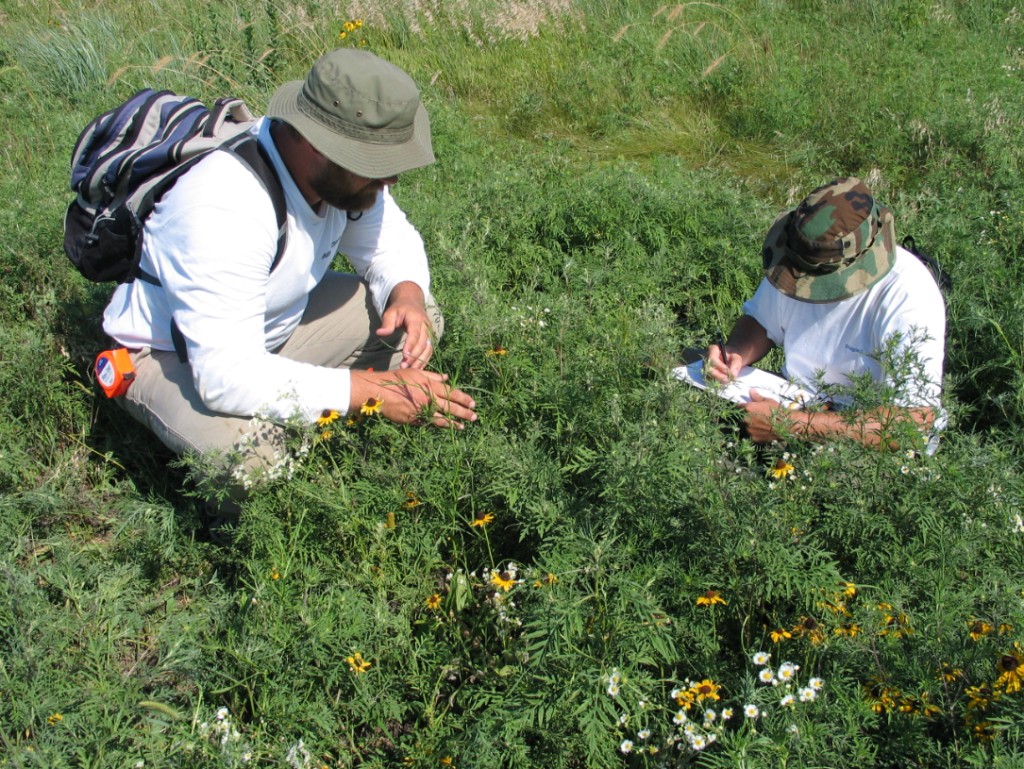


Education into the Future
Our PWP reconstructed prairie is regularly used by preschool, K-12, and college students to learn about the plants and wildlife important to the natural history of Kansas. Community bird and butterfly enthusiasts regularly monitor the species that are found within. And visitors seeking recreation on our paths enjoy the prairie backdrop that enhances their Arboretum stroll.

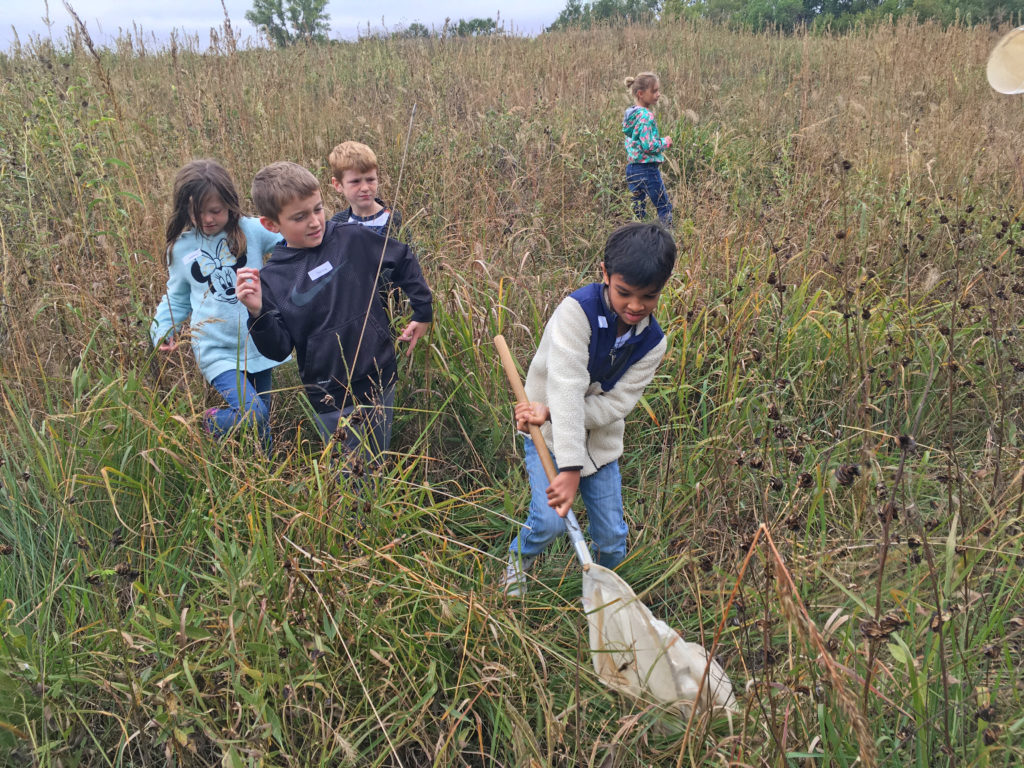
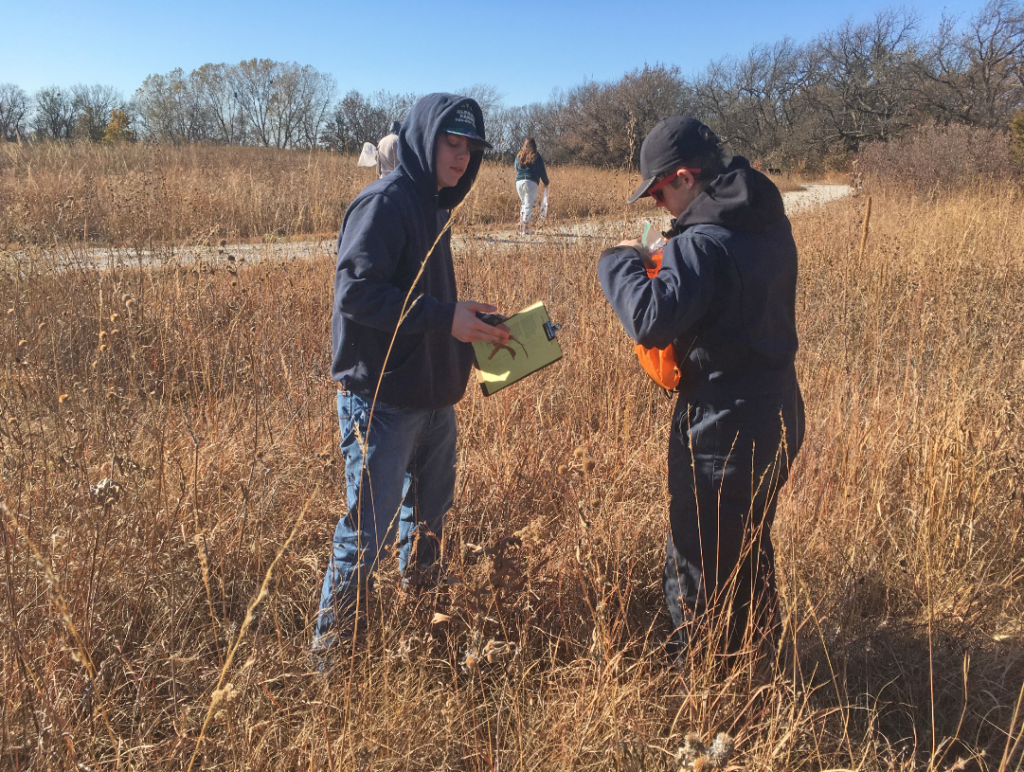
The Prairie Window Project prairie reconstruction on the southern part of our grounds has been a valuable tool to promote prairie conservation, education, and community building with our membership. This project has been at the heart of our mission to cultivate transformative relationships between people and the land. Pay this prairie a visit sometime and let us know if and how it may hold value for you.
